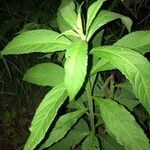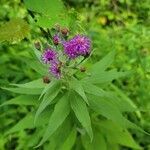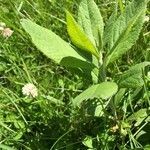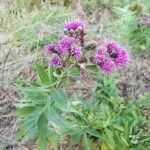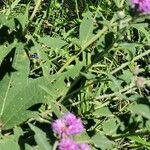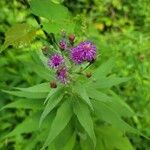Plants 6–10(–15) dm. Stems puberulent to ± tomentose. Leaves mostly cauline; blades elliptic to lance-ovate or lanceolate, 8–15(–18+) cm × 20–45(–75+) mm, l/w = 2–5, abaxially usually puberulent to tomentose or pannose (hairs ± erect, ± curled), seldom glabrate, resin-gland-dotted, adaxially scabrellous, glabrescent, not resin-gland-dotted. Heads in corymbiform-scorpioid arrays. Peduncles 1–25 mm. Involucres broadly campanulate to hemispheric, 4–6(–8+) × 4–7+ mm. Phyllaries 45–65+ in 5–6 series, usually puberulent (often resin-gland-dotted distally), sometimes glabrescent, margins ciliolate, the outer lance-ovate, 1–2 mm, inner oblong to lanceolate, 5–8+ mm, tips rounded-apiculate to acute (sometimes recurved). Florets (15–)20–25(–35+). Cypselae 2.5–3 mm; pappi fuscous to purplish, outer scales 25–30, 0.2–1 mm, contrasting with 35–40+, 5–7+ mm inner bristles. 2n = 34.
